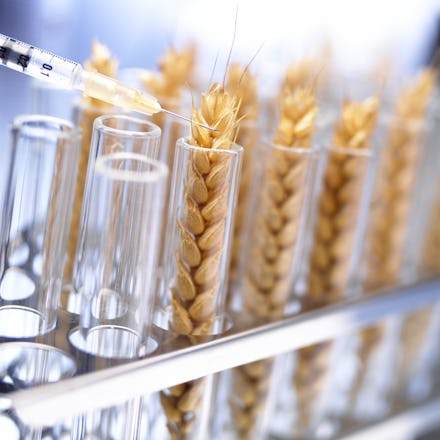How Gene Editing Could Be Agriculture's Next Big Bang

Here's the new adage parents of the future will tell their kids: "Eat your genetically edited vegetables."
You may have already heard of the CRISPR system, a genetic engineering technique that allows for incredibly precise gene editing. Now, researchers from the Department of Crop Genetics at the John Innes Centre in Norwich, United Kingdom, used CRISPR/Cas-9 gene editing to successfully modify the genomes of two main crop groups in the U.K.: barley, and the brassica family, which includes cabbage and broccoli.
CRISPR is making headlines for modifying human embryos and building woolly mammoths, but the John Innes Centre's study shows the beginnings of the flora world finally finding its footing in genomic editing. The ability to edit plant genes means scientists may finally be able to remove potentially dangerous genetic strains found in staple crops, like the ones potentially toxic to humans and animals, or genes that would turn plants into pesticide-resistant menaces.
The Centre's study also proved the modifications are heritable, meaning that over time, a plant family can be repeatedly evolved until it contains only the genes its cultivator wants.
The difference between CRISPR/Cas-9 editing and more common genetic modification — think GMO foods — is the difference between cutting with a scalpel versus cutting with safety scissors.
"It's very precise," Professor Wendy Harwood, leader of the Crop Transformation Group at the John Innes Centre, told Mic. "Rather than having some random component or [genetic] insertion into a plant genome, genome editing targets the change exactly where we want it in the gene. We can make a small change at a specific location, then we can remove everything that's unnecessary in the next generation, so there's nothing left other than the specific change."
The implications of being able to modify crops without the uncertainty of leaving behind, or even creating, potentially harmful genes are huge. First, removing that uncertainty about what bits and pieces are added into the genome during the editing could mean easier regulations for genetically edited organisms (to mollify the crowd of people who insist genetic modification is building mutants). That means being able to know exactly what genes are present in a crop, which is important if you're using that strain to bolster the world food economy.
One example: Harwood sees the potential to create plants that are more resistant to drought, the way some new rice strains are resistant to flooding.
"Many parts of the world are really struggling with dry conditions," Harwood said. "We need to pay attention to plant tolerance to drought and salt."
Unfortunately for Harwood and her team, passing regulations in the European Union is a slow process. A regulation needs a majority-rule vote to pass, which she says is difficult to attain.
"There are already companies in the U.S. with commercialized products," Harwood told Mic. "But in the E.U., they get stalled in the regulatory process. They get through safety assessment without a problem and things are found to be as safe as a conventionally grown crop. But it languishes in the system for a very long time.
"It would be a shame for that to happen with this technology," she added, "when really, there's no difference between plants we can produce this way and natural mutants."